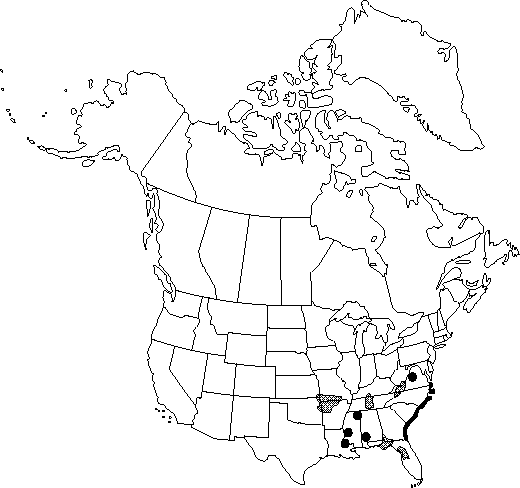Clematis catesbyana
Fl. Amer. Sept. 2: 736. 1814.
Stems climbing, 3-6 m. Leaf-blade pinnate or 2-ternate, 5-9-foliolate, membranous; leaflets ovate to lanceolate, largest 4-9 × 2.5-9 cm, surfaces abaxially sparsely to densely pilose, adaxially glabrate; proximal and lateral leaflets typically 3-cleft, unlobed or few-lobed, margins coarsely toothed or entire, surfaces sparsely pubescent or nearly glabrous; ultimate venation conspicuous. Inflorescences axillary, 3-many-flowered simple to compound panicles with central axis. Flowers unisexual; pedicel slender, 11-13 mm, to 2 cm in fruit; sepals widespreading, not recurved, white to cream, oblong or obovate to oblanceolate, 6-14 × 2-5 mm, abaxially densely white-hairy, adaxially sparsely white-hairy; stamens ca. 30-50; staminodes absent or fewer than stamens; pistils 18-35. Achenes ovate, ca. 3.5 × 1.5 mm, conspicuously rimmed, sparsely short hairy; beak 2.5-3.5 cm.
Phenology: Flowering spring–summer (May–Jul).
Habitat: Disturbed or open, well-drained sites, frequently on limestone outcrops, coastal sands
Elevation: 0-1200 m
Distribution

Ala., Ark., Fla., Ga., Kans., Ky., La., Miss., Mo., N.C., Okla., S.C., Tenn., Va., W.Va.
Discussion
Selected References
None.